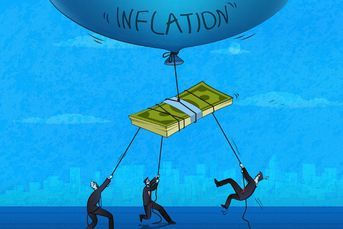Americans have a hard time shaking their credit card addictions
Consumers owed a total of $936 billion in credit-card and other revolving debt in December — a $103 billion increase from April 2011.
Credit cards are an addiction that most Americans never shake.
Through the booms, busts and recessions of the last 15 years, U.S. credit habits have been remarkably consistent, according to a recent study from the Federal Reserve Bank of Boston. Most people carry over a balance from month to month, the study said, and they eagerly gobble up any additional credit their card-issuers offer.
It adds up fast. Consumers owed a total of $936 billion in credit-card and other revolving debt in December, according to Federal Reserve data released on Feb. 5. They’ve added $103 billion since April 2011, but they still have less revolving debt than just before the financial crisis in 2008, when they owed $1.02 trillion.
https://s32566.pcdn.co/wp-content/uploads/assets/graphics src=”/wp-content/uploads2016/02/CI10379329.JPG”
To see how individual Americans’ relationships to credit cards has changed through time, researchers at the Boston Fed’s Consumer Payments Research Center analyzed a huge data set, a sample of 5% of U.S. credit report accounts from 2000 to 2014. Here are some findings:
1. The typical American is always in credit-card debt.
About 35% of those aged 25 to 50 with credit cards are “convenience users,” who pay off their balances each month. The majority, whom researchers call “revolvers,” carry debt forward from month to month and usually pay high interest charges in the process.
https://s32566.pcdn.co/wp-content/uploads/assets/graphics src=”/wp-content/uploads2016/02/CI10379429.JPG”
Americans don’t really taper their credit-card borrowing until their fifties. Even at age 70, 45% of credit-card users aren’t paying off their credit cards each month. And the typical 80-year-old still has more than $600 on a credit card. “The median person is always borrowing, although at the end of life she is not borrowing much,” the study concludes.
2. Americans’ debt addiction begins in their twenties.
Between ages 20 and 30, Americans rush to embrace credit-card debt. Their credit-card limits jump about 450% in that time, while their debt rises almost as quickly, by more than 300%.
For young adults just starting out, credit cards become a substitute for savings. “People in their 20s don’t seem to save much,” said Scott Fulford, a Boston College professor who wrote the study with Scott Schuh, director of the Boston Fed’s Consumer Payments Research Center. “Well, maybe they’re not saving very much because the way they’re ‘saving’ is just by getting higher credit limits. That provides the funds for emergencies that they need,” Mr. Fulford said.
3. Old habits die hard.
As Americans get older and more mature, they still rely heavily on credit cards. While 20-year-olds use more than half their available credit on average, 50-year-olds use almost 40%.
The study finds that individuals have “very stable” credit habits over time. Some might typically use more of their available credit and others less, but each person’s use of credit cards doesn’t vary much during the course of his or her life. Finances are sometimes disrupted by shocks — perhaps a car repair, a medical emergency or even a bonus — that do cause people to alter their credit habits. Any disruption is temporary. Within two years, an individual’s credit use is mostly back to its ordinary pattern.
4. If you can borrow more, you probably will.
Americans borrow more in good times and less during recessions. The driving factor isn’t our mood about the economy. Borrowing seems driven by our credit limits. When banks offer us a higher limit, we use it. When they cut us off, we tighten our belts.
https://s32566.pcdn.co/wp-content/uploads/assets/graphics src=”/wp-content/uploads2016/02/CI10379529.JPG”
Banks are constantly adjusting how much credit they give customers. The average credit-card limit rose about 40% from 2000 to 2008, then plunged about 40% during 2009.
Credit limits have the biggest effects on people who carry debt forward from month to month. When offered a 10% increase in credit limits, these “revolvers” subsequently increase their debt by 9.99%, the study finds. In other words, revolvers — the majority of U.S. consumers — typically use almost every extra cent offered by their credit card issuers.
This is a striking statistic, but it’s hard to know what conclusion to draw from it. Are most people just incapable of resisting temptation? Or are they in such desperate economic straits that they need more credit to get by? It may be a combination of the two, and the study’s co-authors are planning follow-up studies on these questions.
Learn more about reprints and licensing for this article.








